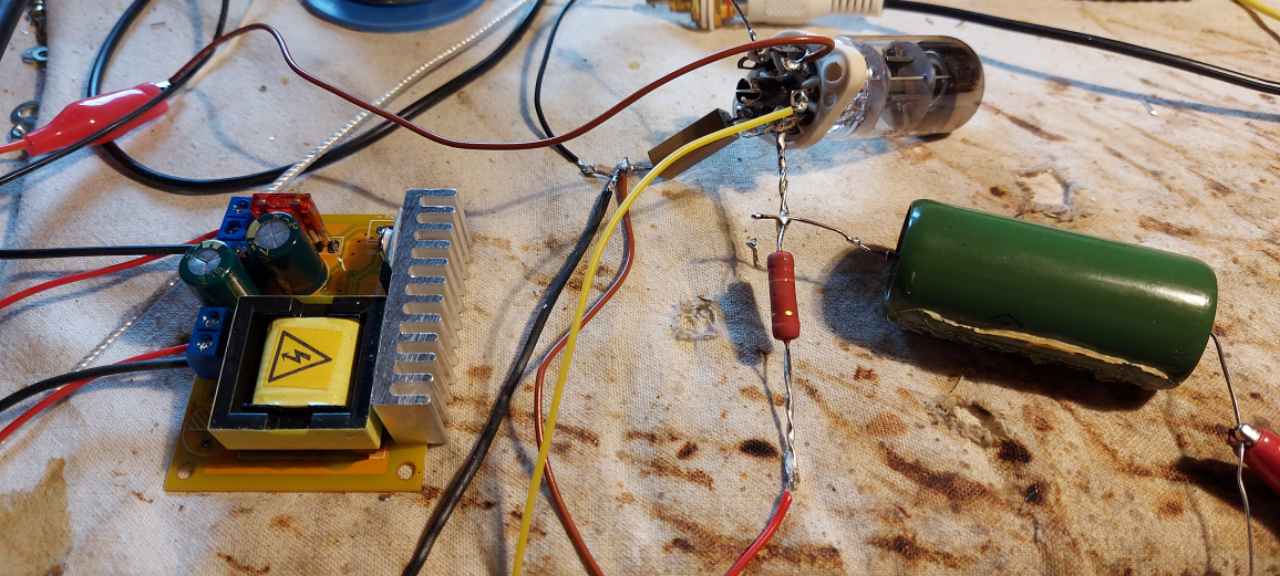I did a ratsnest with a 6c45 tube:

But the output wave is "dancing" on the scope,I am using gridstopper.
Watch the film file.
Sinus 6c45 - YouTube

But the output wave is "dancing" on the scope,I am using gridstopper.
Watch the film file.
Sinus 6c45 - YouTube
Yes there is a testsignal.
The powersupply is a step up.From 28v to 250v.
Maybe I should add an elyt after it?
Edit:How to get read of motorboating?
The powersupply is a step up.From 28v to 250v.
Maybe I should add an elyt after it?
Edit:How to get read of motorboating?
Your test signal is a sine wave? What shows on the scope if you turn test amplitude to 0V?
Would you show circuit and advise scope sweep rate, voltage, etc? (It's hard to read the scope picture.)
Would you show circuit and advise scope sweep rate, voltage, etc? (It's hard to read the scope picture.)
Yes the input is a sinewave,If turn the input of it is a straight line.
It is the same if I start at zero and go up to about 54vpp,I can go higher if I want.
The B+ is 250v and the anodevoltage is 150v.
The scope is atm set to 1ms.
Edit: ofcorse the the output fluktase betwen about 49 to 57vpp.
It is the same if I start at zero and go up to about 54vpp,I can go higher if I want.
The B+ is 250v and the anodevoltage is 150v.
The scope is atm set to 1ms.
Edit: ofcorse the the output fluktase betwen about 49 to 57vpp.
Last edited:
I was thinking that the "dancing" might be the scope's trigger interacting with the combination of the signal and hum, but there's no hum in the absence of signal.
Does the problem persist regardless of test amplitude, or start start abruptly at some elevated test amplitude? Any change in B+ associated with onset of problem? Added bypass capacitance might be a useful experiment. At this point, trying to find anything that changes the problem symptoms may be insightful.
Good luck!
Does the problem persist regardless of test amplitude, or start start abruptly at some elevated test amplitude? Any change in B+ associated with onset of problem? Added bypass capacitance might be a useful experiment. At this point, trying to find anything that changes the problem symptoms may be insightful.
Good luck!
I think i found out whats wrong,I connected a 330uF cap at the b+ and theEdit: ofcorse the the output fluktase betwen about 49 to 57vpp.
sinewave become much more stabil.
When at the same time the current at the input of the converter started going from about 50mA to 300mA up and down,up and down from my benchsupply.
It must be this cheap converter that is causing this???😕
I even tried with a 10uF cap and the same thing.
- Home
- Design & Build
- Equipment & Tools
- Dancing sinus wave